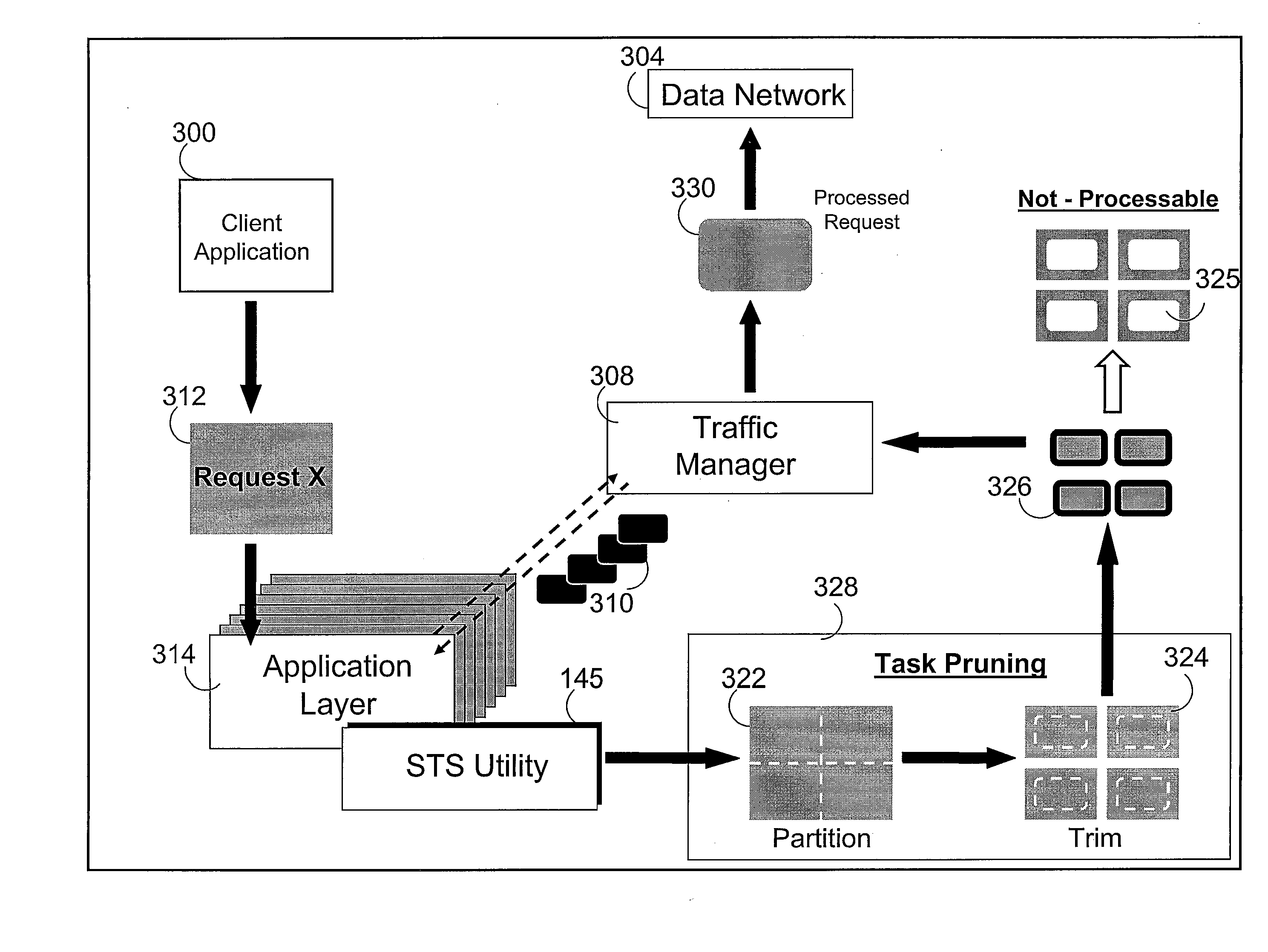Method for application layer synchronous traffic shaping
a traffic shaping and application layer technology, applied in data switching networks, frequency-division multiplexes, instruments, etc., can solve the problems of slow progress of network traffic, increased bandwidth consumption, and higher demands on network qos, and achieve the effect of avoiding network congestion
- Summary
- Abstract
- Description
- Claims
- Application Information
AI Technical Summary
Benefits of technology
Problems solved by technology
Method used
Image
Examples
Embodiment Construction
[0021]The present invention provides a method, a system, and a computer program product for implementing traffic shaping by processing tasks as synchronous requests, where the tasks represent one or more units of work contained within a request. Before a request is sent through the network, that single request is inspected in order to derive the amount of work that the request would generate in the network. Thus, a measure of the amount of work (or number of tasks), rather than the amount of data, within a request is considered. An application level traffic manager queries the amount of work in that request compared to the amount of work that the network can support and generates a number of traffic envelopes. Based on the results of this query, “task pruning” may be implemented to break the request into smaller manageable task that fit into the traffic envelopes.
[0022]Task pruning may also prevent one or more individual units of work from being permitted to proceed through the rema...
PUM
 Login to View More
Login to View More Abstract
Description
Claims
Application Information
 Login to View More
Login to View More - R&D
- Intellectual Property
- Life Sciences
- Materials
- Tech Scout
- Unparalleled Data Quality
- Higher Quality Content
- 60% Fewer Hallucinations
Browse by: Latest US Patents, China's latest patents, Technical Efficacy Thesaurus, Application Domain, Technology Topic, Popular Technical Reports.
© 2025 PatSnap. All rights reserved.Legal|Privacy policy|Modern Slavery Act Transparency Statement|Sitemap|About US| Contact US: help@patsnap.com



